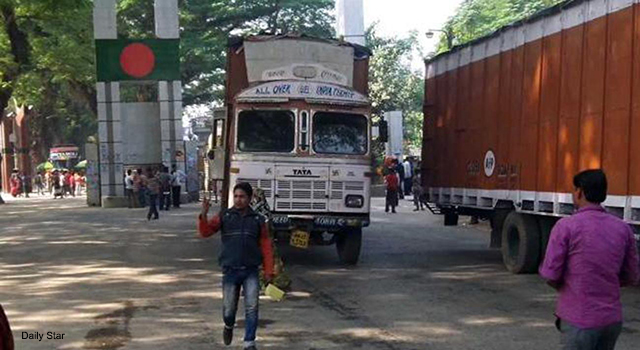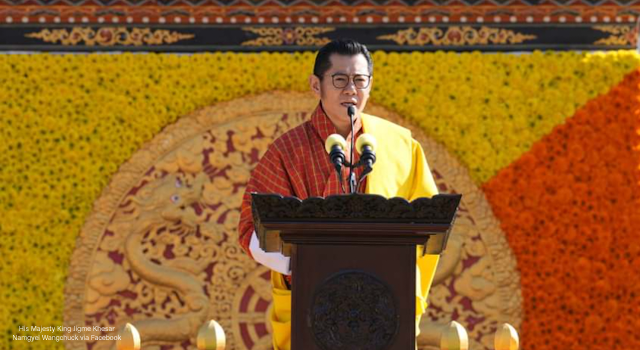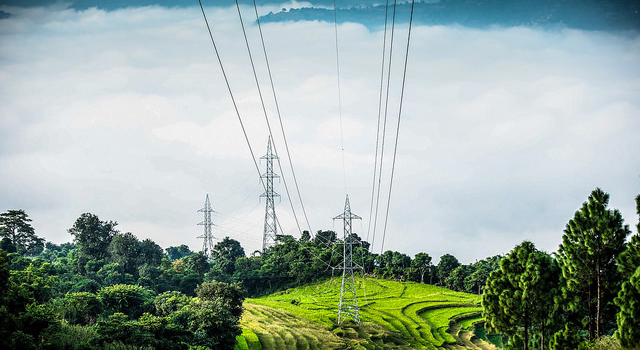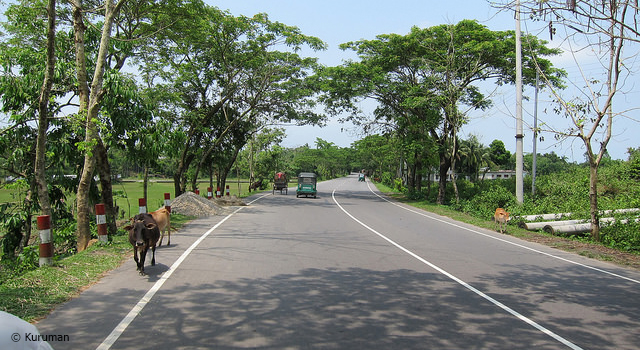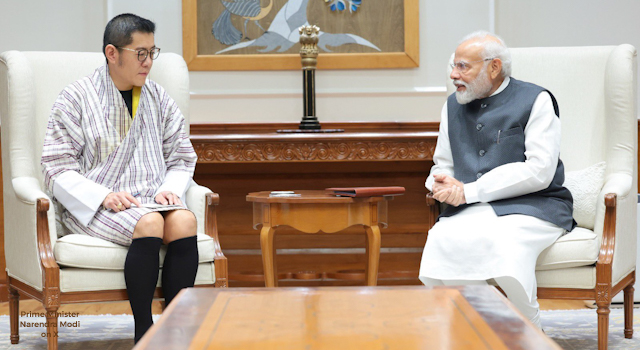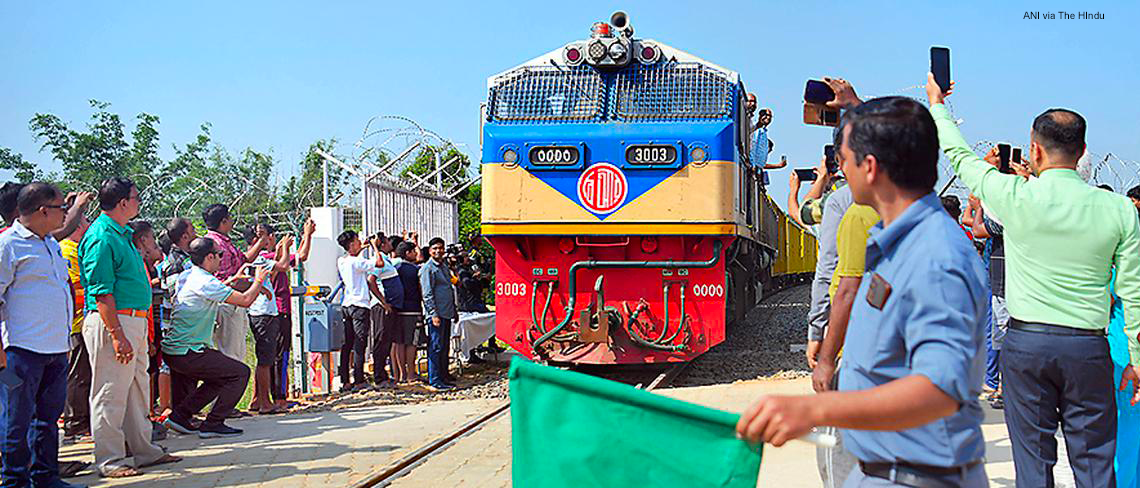
Commentary: BBIN Economic Corridor Has Potential to Transform Trade and Development in East and Northeast India
21 November 2023
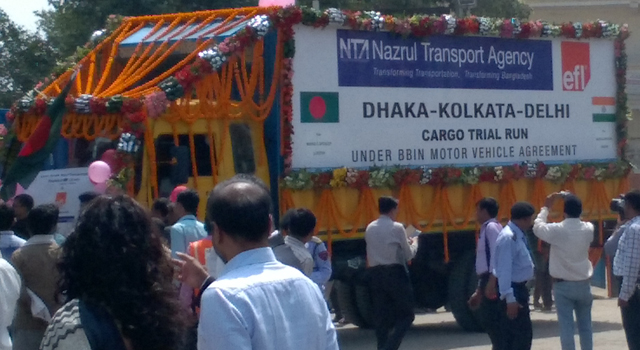
ADB under the SASEC program has invested more than $15 billion in the priority sectors of transport, energy, trade facilitation, economic corridor development, and ICT as of 2020. To fully realize BBIN's potential, countries must also invest in regulatory reform in logistics services. This is an excerpt of an article that appears on the Tatsat Chronicle.
BBIN Economic Corridor Has Potential to Transform Trade and Development in East and Northeast India
By Kalyan Chatterjee
Garment exports constitute more than four-fifths of Bangladesh's total export of trade and services. Eighty-five percent of garments find markets in Europe and the United States (US), under the system of preferential trading for least developed countries. Together, exports to the European Union, the United Kingdom, and US add up to as much as $37 billion. In comparison, Bangladesh's garment exports to its next-door neighbor, India, is barely $1 billion. And this has been achieved in just the past couple of years. In 2020, India's garment import from Bangladesh was just about a fifth of this.
It is just one example of the low levels of regional economic cooperation in the South Asian region, home to some of the poorest people in the world. According to a 2021 World Bank report, regional trade can boost India's national income by as much as 7.6% and that of Bangladesh by over 16%, bringing all-round prosperity to a fifth of humanity.
The benefits of regional cooperation had occurred to South Asian countries nearly half a century ago, leading them to create the South Asian Association for Regional Cooperation (SAARC) in 1985. SAARC had been inspired by the success of other regional economic groupings such as the European Community, now expanded into the European Union, and the Association of Southeast Asian Nations (ASEAN).
The Bangladesh-Bhutan-India-Nepal Motor Vehicles Agreement (BBIN MVA) aims to make possible free movement of vehicles within these four countries, all sharing borders with India, shortening trade routes, and making international and interregional trade faster and cheaper. But eight years have passed, and it remains mostly on paper.
Countries in the BBIN subregion have so far failed to take advantage of their proximity to one another and it remains one of the least integrated regions globally. Trade between Bangladesh and India, the two largest economies of the region, is just 1% of Indian trade and 10% of Bangladeshi trade. The subregion is way behind: even in the East African and sub-Saharan regions, interregional trade is 50% and 22% of total trade, respectively, according to a report, Multimodal Connectivity for Shared Prosperity: Towards Facilitating Trade in the BBIN Subregion, by development organization CUTS International.
The subregion is burdened by high trade costs due to poor infrastructure and logistics. The Asian Development Bank (ADB) through the South Asian Subregional Economic Cooperation (SASEC) program has invested more than $15 billion in the priority sectors of transport, energy, trade facilitation, economic corridor development and information and communication technology (ICT) as of August 2020.
The CUTS analysis of gross domestic product (GDP) and trade within the subregion between 2010 and 2019 brings out the positive correlation between the two. In 2010, interregional trade was $6 billion, while GDP was $1.7 trillion. By 2019, trade had risen to $16 billion, while GDP had nearly doubled to $3.2 trillion. The GDP of the BBIN subregion grew faster than the world GDP, leading to its identification as one of the fastest growing regions of the world.
The benefits of integrating BBIN will begin to emerge when trucks, trains, and boats begin to cross international boundaries with the complete implementation of the MVA. Though the MVA has an average score measured against an ideal transport agreement, it misses out with regard to some important elements, according to the 2021 World Bank Report. Chief among them are standards for the design of infrastructure on which services are provided, rules on the training and issuance of driver's licenses and general principles for transit movement.
The cost and quality of road transport services are critical as it accounts for more than 80 percent of all regional trade shipments. High costs of trade and long delays in crossing borders, the age and reliability of fleets, the poor quality of services, weak skills, and the high degree of atomization hamper trade. But despite its importance, said the WB Report, little attention has been paid to the cross-border integration of transport services in the region.
Creation of infrastructure alone will not reduce trade costs. Countries must invest in regulatory reform in logistics services such as trucking, warehousing, and freight forwarding. Infrastructure has to be built to the same standards and specifications, providing the basis for allowing vehicles loaded to the same limits to cross the borders without hindrance. Different load limits may require goods to be transloaded, resulting in delays and high costs.
Efficient cross-border road transport operations require countries to negotiate complementary reforms—on road signs, driver training, insurance, and visa regimes—not specified in the MVA. The MVA requires them to carry as many as 11 documents. Digital technology can help in sharing information between the countries, obviating the need for drivers to carry physical copies of documents.
Because of the shape of the borders in the region, Bangladesh could serve as a transit country for trade between northeast India and the rest of India as well as provide easier access to ports for landlocked Nepal and Bhutan. But, as of now, cross-border movement of vehicles—for transit or delivery of goods—is not possible. But if the integration eventually happens then, CUTS International estimates, the combined GDP of the region can easily exceed $8.3 trillion by 2035 as projections show.



